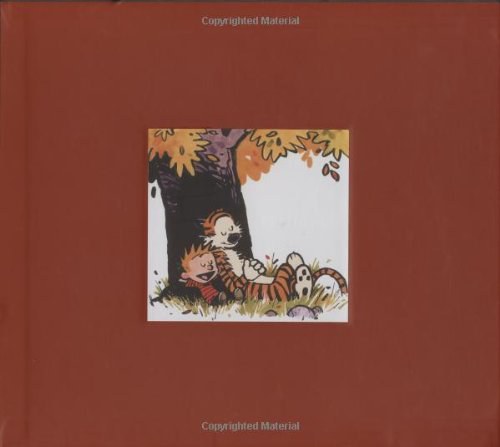
Peter C·Perdue《China Marches West》
书刊介绍
内容简介
From about 1600 to 1800, the Qing empire of China expanded to unprecedented size. Through astute diplomacy, economic investment, and a series of ambitious military campaigns into the heart of Central Eurasia, the Manchu rulers defeated the Zunghar Mongols, and brought all of modern Xinjiang and Mongolia under their control, while gaining dominant influence in Tibet. The China we know is a product of these vast conquests.
Peter C. Perdue chronicles this little-known story of China’s expansion into the northwestern frontier. Unlike previous Chinese dynasties, the Qing achieved lasting domination over the eastern half of the Eurasian continent. Rulers used forcible repression when faced with resistance, but also aimed to win over subject peoples by peaceful means. They invested heavily in the economic and administrative development of the frontier, promoted trade networks, and adapted ceremonies to the distinct regional cultures.
Perdue thus illuminates how China came to rule Central Eurasia and how it justifies that control, what holds the Chinese nation together, and how its relations with the Islamic world and Mongolia developed. He offers valuable comparisons to other colonial empires and discusses the legacy left by China’s frontier expansion. The Beijing government today faces unrest on its frontiers from peoples who reject its autocratic rule. At the same time, China has launched an ambitious development program in its interior that in many ways echoes the old Qing policies.
China Marches West is a tour de force that will fundamentally alter the way we understand Central Eurasia.
作品目录
List of Maps*
Preface
Acknowledgments
Note on Names, Dates, Weights and Measures, and Chinese Characters
Introduction
History, Time, and Memory
The Qing Conquests as a World Historical Event
I. The Formation of the Central Eurasian States
1. Environments, State Building, and National Identity
The Unboundedness of Central Eurasia
Trade, Transport, and Travel
The Frontier Zone
Isolation and Integration
2. The Ming, Muscovy, and Siberia, 1400–1600
The Ming and the Mongols
State Formation in Muscovy and Russian Expansion
Siberian and Chinese Frontiers
3. Central Eurasian Interactions and the Rise of the Manchus, 1600–1670
Building the Zunghar State
The Rise of the Manchus
Mongolian Influence on the Manchu State
Early Modern State Building Compared
II. Contending for Power
4. Manchus, Mongols, and Russians in Conflict, 1670–1690
Kangxi the Ruler
Galdan’s Intervention
Kangxi’s First Personal Expedition
The Treaty of Nerchinsk and the Excluded Middle
5. Eating Snow: The End of Galdan, 1690–1697
The Dolon Nor Assembly
The Battle of Jao Modo
The Emperor Rewrites History
The Final Campaigns and the Fate of Galdan
6. Imperial Overreach and Zunghar Survival, 1700–1731
The Rise of Tsewang Rabdan
Three Central Eurasian Travelers
The Penetration of Turkestan and Tibet
The New Emperor Changes Tack
7. The Final Blows, 1734–1771
Transforming the Barbarians through Trade
The Death Knell of the Zunghar State
The Conquest of Turkestan
The Return of the Torghuts
III. The Economic Basis of Empire
8. Cannons on Camelback: Ecological Structures and Economic Conjunctures
Galdan the State Builder
Nian Gengyao and the Incorporation of Qinghai
Administering the Frontier
9. Land Settlement and Military Colonies
Deportation from Turfan
Settlement of Xinjiang
Colonization and Land Clearance
Economic Development
10. Harvests and Relief
Harvests and Yields
Granary Reserves
The Contribution Scandal
The Relief Campaign of 1756
11. Currency and Commerce
Money on the Frontier, from Song through Ming
Integration and Stabilization
Commerce as a Weapon of War
Tribute and Frontier Trade
IV. Fixing Frontiers
12. Moving through the Land
Travel and Authority
Marking Space in Stone
Maps and Power
Expanding the Imperial Gaze
13. Marking Time: Writing Imperial History
Kangxi’s Campaign History
Yongzheng and the Dayi Juemilu
Qianlong’s Account of the Zunghar Mongols
A View from the Frontier
Nomadic Chronicles
V. Legacies and Implications
14. Writing the National History of Conquest
Statecraft Writers and Empire
Geopolitics and Emperor Worship
Chinese Historians and the Multicultural State
Soviet and Mongolian Attacks on Qing Aggression
Empires, Nations, and Peoples
15. State Building in Europe and Asia
The Political Ecology of Frontier Conquest
European, Chinese, and Inner Asian Models
Theories of Nomadic Empires
Rethinking the Qing in the World
16. Frontier Expansion in the Rise and Fall of the Qing
The End of the Qing State
Northwest and Southern Frontiers
The Negotiated State
Commercialization and Regionalization
Appendixes
A. Rulers and Reigns
B. The Yongzheng Emperor Reels from the News of the Disaster, 1731
C. Haggling at the Border
D. Gansu Harvests and Yields
E. Climate and Harvests in the Northwest
Abbreviations
Notes
Bibliography
Illustration Credits
Index
* Maps
1. The Qing empire, ca. 1800
2. The Zunghar empire
3. Ecological zones of Eurasia
4. Tribal peoples and Russian settlements in the sixteenth and seventeenth centuries
5. The Sino–Russian frontier
6. The Kangxi emperor’s Zunghar campaigns, 1690–1697
7. The Qianlong emperor’s western campaigns, 1755–1760
8a. Grain price integration in Gansu, 1739–1864
8b. Grain price integration in Gansu with famine years omitted, 1739–1864
9. Grain price integration in Xinjiang, 1777–1860
相关推荐
-

英语美文口袋书:情感篇
《英语美文口袋书:情感篇》内容简介:《英语美文口袋书:情感篇》的选材博采众长,不拘一格,内容不分国度,既从经典中探寻历史的
-

古代中国的图像长卷-资治通鉴
古代中国的图像长卷-资治通鉴 本书特色 历史工作者的思虑与用心,往往决定了我们所见到的过去,将会呈现出一幅怎样的面貌与图像。幸得司马光与他的编撰团队,我们感受到...
-

暮鼓卷-世界通史有图有真相
暮鼓卷-世界通史有图有真相 本书特色 用真相破解悬疑,用图片见证真相世界历史的真相,让你猝不及防!人类来源于何处?人类将去往何处?暮鼓卷-世界通史有图有真相 内...
-

治国与治史-高端讲坛
治国与治史-高端讲坛 本书特色 《治国与治史》为高端讲坛系列之一。《高端讲坛》系列简介:作为一个正在崛起的经济大国和文化大国,中国的力量逐渐得到全世界的认同。中...
-

家谱
家谱 本书特色 家谱,以特殊形式记录家族来源、迁徙、繁衍、生息、荣衰、升沉等,是家族的生命史。近几十年,社会经济文化高速发展,不少地区出现修家谱热。很多人想知道...
-

高中历史基础知识及考点突破--必修.选修
高中历史基础知识及考点突破--必修.选修 本书特色 本书严格依据,由经验丰富的专家名师联袂编写,体例科学新颖,内容全面实用,印装精美,开本小巧便牛携带,是学生同...
-

一本书读懂互联网金融
《一本书读懂互联网金融》内容简介:《一本书读懂互联网金融》是一本全面揭密互联网金融市场动态、产品、平台、模式的专著,全书共
-

唐史-蔡东藩中华史-现代白话版
唐史-蔡东藩中华史-现代白话版 本书特色 “蔡东藩中华史”系列是蔡东藩所著历史演义的白话版,全书浩浩一千余回,写尽几度春秋,上起秦始皇,下至1920年,共记述了...
-

捷克和斯洛伐克汉学研究
捷克和斯洛伐克汉学研究 内容简介 《列国汉学史书系:捷克和斯洛伐克汉学研究》是斯洛伐克著名汉学家和杰出的比较文学学者、“布拉格汉学学派”代表人物之一马立安.高利...
-

中国古典名著百部藏书---战国策
中国古典名著百部藏书---战国策 本书特色 中国古典名著是中国传统文化的精髓,是中华民族五千年来的智慧结晶,是取之不尽、用之不竭的精神源泉。中国古典名著是中国传...
-

如果现在是历史
如果现在是历史 本书特色 本书特点:1、从大历史的角度,把目光延伸到整个人类历史,分析历史发展的规律。2、虽然涉及整个人类历史长河,但是着眼点却落实在具体的人和...
-

辛亥-计划外革命
辛亥-计划外革命 本书特色 达摩克利斯之剑下,晚清*后的变革经济掀翻政治,晚清政改的不归路乱世赌人性,变生肘腋的致命一击海外学界揭示大清国覆亡的路线图辛亥-计划...
-

凯西·凯赛《克拉拉的战争》
这个故事是根据真实的历史事件写成的。13岁的克拉拉和她的全家人曾经在布拉可知过着平静而幸福的生活。纳粹人侵这后,他们被驱赶
-

成为教练型培训师:企业培训师的升级成长之路
《成为教练型培训师:企业培训师的升级成长之路》内容简介:基于客户需求,作者整合了16年培训和10年教练经验,研发出教练型培训的
-

南诏王国传奇
南诏王国传奇 本书特色 南诏是华夏儿女开拓云贵高原的早期成果之一,也是西南历史上*大的地方政权。作为一个曾在大唐和吐蕃两大强邻之间纵横捭阖,续写“后三国”神话的...
-

历史有魏道
历史有魏道 本书特色《历史有魏道》为青年学者、作家、“百家讲坛 ”主讲人魏新在2014年在搜狐网搜狐新闻客户端视频 自媒体栏目“历史有魏道”脱口秀结集,并经过了...
-

熊猫指南·那些中国食材
《熊猫指南·那些中国食材》内容简介:2021年,是熊猫指南发布中国优质农产品榜单的第4年,上榜产品数量从56种增加到274种。一路下
-

神知识又增加了
《神知识又增加了》内容简介:一本帮助你梳理希腊神话众神与英雄故事的百科全书。本书为每个神祇与英雄建立了详尽的个人档案,包括
-

郑和史诗(豪华精装)
郑和史诗(豪华精装) 本书特色 ★ 大8开精装,云南人民出版社出版★ 全彩印刷,包含大量珍贵照片,极具收藏价值★ 出版社多次邀请众多航海史学等领域知名专家学者审...
-

统治的热望(修昔底德笔下的阿尔喀比亚德和帝国政治)
统治的热望(修昔底德笔下的阿尔喀比亚德和帝国政治) 本书特色 “修昔底德注疏”以修昔底德《战争志》笺注体汉译本为要,辅以西方学界研究修昔底德的精深之作,以助益于...





